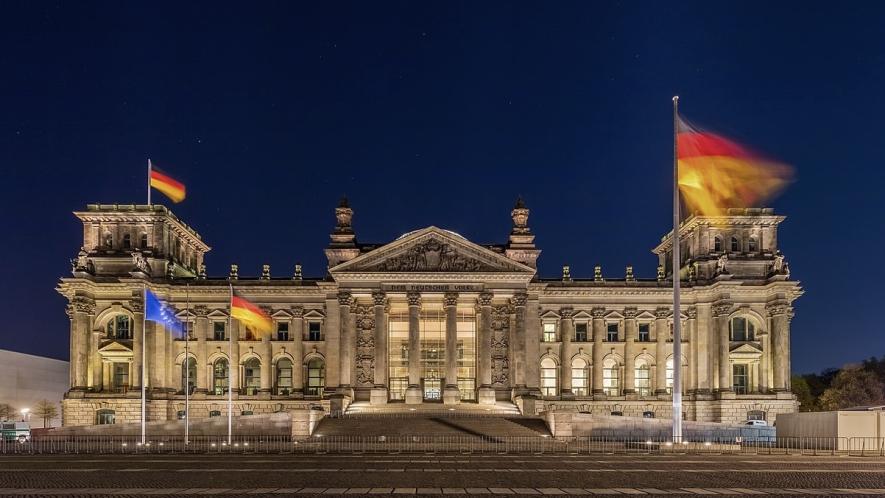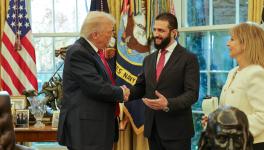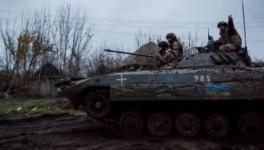Who Pays Price for Return of German Militarism?

Reichstag building in Berlin, seat of the Bundestag. Image: Diego Delso/Wikimedia Commons
Driven by geopolitical interests and the scramble for resources, the Ukrainian conflict has already claimed countless lives and displaced millions. The idea that more weapons will bring peace is a dangerous illusion.
As I wrote in Mutiny: How Our World is Tilting (2024), this war has always had a Janus face. On one side is the violation of Ukraine’s territorial integrity, against all international law, through Russian aggression. This is well understood even by countries in the Global South. On the other side, there is a proxy war between the US and Russia, fought on the backs of Ukrainians, through which tens of thousands of young men are cannon fodder in a geostrategic conflict.
Washington now shamelessly admits it: this is a proxy war fueled and directed by the United States. Trump, however, claims it is the wrong proxy war – that Russia is not the adversary of the United States, and all efforts should focus on the coming war the US is preparing against China. All because Washington sees its economic and technological dominance challenged by China.
The US strategy to prolong the war in Ukraine through massive investments, hoping to exhaust Russia economically and militarily, is reaching its end. Washington has long faced a choice: intervene more openly with the risk of a Third World War or seek diplomatic exits.
Opportunistically, not peacefully, the US chooses the latter to extract maximum advantage. Through an imposed deal, Trump wants Europe to bear the war’s costs while the US gains control over Ukraine’s mineral and resource extraction. Trump treats Ukraine like a colony, much as the US treats Global South nations. This makes clear the war was never about values but about geostrategic interests and control over resources and fertile land.
The failure of European strategy
The failure of European states to take serious diplomatic initiatives for a ceasefire over the past three years is now taking its toll. One European leader after another claimed to pursue “military victory”, which was unrealistic from the start.
Instead of learning from this debacle, parts of Europe’s establishment want to double down on the failed strategy, prolonging the war at any cost. Now, Trump is unilaterally taking the initiative to negotiate directly with Russia.
The contradictions are glaring. The same voices that yesterday insisted victory over Moscow was imminent today claim Moscow could be “on Brussels’s Grand Place tomorrow” unless we urgently rearm. Both claims cannot be true. This fearmongering serves to justify massive rearmament plans.
Many who grew up in the 20th century learned that combining Germany, chauvinism, and militarism is a bad idea. The cannon manufacturers of the Ruhr Valley fueled two devastating world wars. Post-1945, Europe agreed: no return to German militarism.
Yet today feels like a bad B-movie déjà vu. The tank manufacturers are back, and it is said that Germany must rapidly rearm. On March 18, 2025, the German parliament voted for constitutional amendments enabling the largest rearmament program since WWII. Germany already ranks fourth globally in defense spending but is now shifting into turbo mode to become openly kriegstüchtig (“war-ready”).
This rearmament will be financed through debt – a radical shift for Berlin, which previously blocked debt-increasing proposals. This proves budget debates are political, shaped by power dynamics, not financial dogma.
Alongside Germany’s spending, the European Commission launched a militarization package funded by debt and loans. It plundered cohesion, climate, and development funds.
Fueling a fear psychosis
NATO chief Mark Rutte recently warned Europeans to open their wallets for weapons or risk “speaking Russian soon”. Fear is being stoked.
Russia’s GDP is no larger than that of Benelux, the customs union of Belgium, the Netherlands, and Luxembourg. After three years of war, Russian troops hold just 20% of Ukraine. They’ve struggled for months to capture the eastern Ukrainian city of Pokrovsk against an exhausted opposition army. Are we to believe this same force could defeat Poland, Germany, France, and the UK combined? Absurd.
Even with North Korean aid, Russia took months to retake two-thirds of Kursk. Europe today has four times more warships, three times more tanks and artillery, and twice as many fighter jets as Russia.
True peace requires disarmament negotiations from a position of strength.
Europe’s “defense capacity” is said to have “no price tag”. But the price is literal: cuts to schools, healthcare, social security, culture, and development aid. Figuratively, society itself is being militarized.
To position the EU in a new global scramble, European Commission President Ursula von der Leyen speaks of an “era of rearmament”. For Europe’s people, this means an era of social dismantling.
Billions for war means that climate budgets, health care, and pensions are slashed. Weapons stocks soar – Rheinmetall, Dassault, BAE Systems profit, while workers foot the bill.
As French union leader Sophie Binet says: “For workers, nothing is worse than a war economy”. Every euro for weapons is a euro denied to schools and hospitals.
The arms industry claims rearmament will boost the economy – a “military Keynesianism” through which states prop up weapons manufacturers. With Europe’s auto sector in crisis and Germany in recession, they push a switch from cars to tanks.
Families don’t buy tanks. Tanks must be sold and used, perpetuating war.
Higher military spending won’t raise living standards. Weapons production benefits no one. Investing in hospitals creates 2.5x more jobs than weapons. Defense ranks 70th out of 100 sectors in job efficiency.
Where is Europe headed?
Trump’s proposed tariffs on German cars could kill Germany’s auto industry. Once staunchly Atlanticist, Frankfurt’s financial circles now push for European sovereignty independent of Washington.
This aligns with the EU’s new defense white paper: 78% of defense purchases are currently from non-EU countries (mostly the US), but by 2035, 60% must be from Europe.
But Europe’s fragmented arms industry – competing German, French, Italian, and British firms – jeopardizes this. Germany pours money into Rheinmetall, while Franco-Italian and British-French alliances jostle for contracts.
Europe is politically splintered and identity-crisis-ridden. Capitalists face two paths: deepen divisions into competing factions or forge a militarized imperial bloc. Socialists must envision a different Europe: a socialist and peaceful one.
Breaking the deadly spiral of arms races
Global arms races follow the same logic: one nation’s upgrade forces others to follow. Pursuing deterrence to its end means nuclear-arming Germany and Europe.
At worst, this spiral ends in a catastrophic war. History shows that only mutual disarmament treaties and strong anti-war movements can break it.
To justify rearmament, figures like Belgian Prime Minister Bart De Wever invoke the late-Roman adage: Si vis pacem, para bellum (“If you want peace, prepare for war”). This was never a peace slogan but a militarist one – and it didn’t save Rome, which collapsed decades later.
In contrast, before both World Wars, the workers’ movement resisted militarism. The left must challenge the West’s double standards, war-mongering, and destructive arms races.
The reality is simple: if you want war, prepare for war. If you want peace, prepare for peace. We must forge peace from below, hand in hand with the fight for social justice and socialism.
Peter Mertens is General Secretary of the PVDA-PTB (Workers’ Party of Belgium) and a member of the Belgian Chamber of Representatives. His latest book, from LeftWord Books (India), is Mutiny: How Our World is Tilting (2024).
This article was produced by Globetrotter.
Get the latest reports & analysis with people's perspective on Protests, movements & deep analytical videos, discussions of the current affairs in your Telegram app. Subscribe to NewsClick's Telegram channel & get Real-Time updates on stories, as they get published on our website.
























